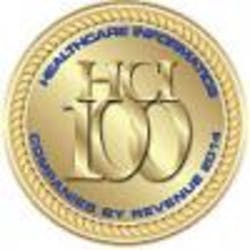To accompany our Healthcare Informatics 100 list of the largest companies in health information technology, we like to give readers a heads-up on some fast-growing companies that could very well make the HCI 100 in years to come. Throughout the week, leading up to the release of this year’s HCI 100 list on May 19, we will profile companies that have caught the attention of investors and analysts by addressing pressing needs in the industry with elegant, sophisticated solutions. So far they have been able to execute on the business side, managing the challenges of growing from startups to well-established companies.
GetWellNetwork, a platform for improving patient engagement, grew out of its CEO’s experience as a cancer patient in 1999. Diagnosed with non-Hodgkin’s lymphoma at age 28, Michael O’Neil, Jr. went through surgery and several rounds of chemotherapy. Despite the marvelous clinical care he received, O’Neil observed several shortcomings in hospital patient engagement.
“Every day at 9 a.m. a hospital employee would walk in and ask me for $8 for the TV. If you didn’t pay, they took a key and turned the TV off,” he says. O’Neil was also hungry for more information about his condition. He was told there was a channel on the TV with educational material, but all he found were videos on breast-feeding.
“When you are in the hospital, it is not lost on you how amazingly coordinated the technology is to get you the best care, including medical devices, EHRs, people and processes,” says O’Neil. “But the laziest asset in the whole setup is the dumb TV monitor in the corner of the room. I thought what if we took this lazy asset and turned it into a desktop for patient care. Would we be able to turn the care on its head where a patient and family would be so obnoxiously involved every step of the way that it might actually make the care better?”
That question launched O’Neil on a 14-year journey to work with provider organizations on a content management platform with a workflow engine that takes triggers from other systems to involve a patient in care. As an M.B.A. student at Georgetown University, he was able to turn his initial observations into a business plan.
Here’s an example: To deal with pain management, Bethesda, Md.-based GetWellNetwork has a workflow called the pain assessment pathway. If a patient is on a morphine pill, the system interrupts the TV show every hour to ask the patient to rate their pain on a scale. “If I report a certain threshold or below, it is simply going to document that in Epic, Cerner or Allscripts,” O’Neil says. “If I report a five or above, it will document but also, through a Vocera badge, signal a nurse to go to the room. That is one pathway we help deploy, where pain management is a service or quality metric that a particular organization is trying to move the needle on. We are working with healthcare systems with the courage to take the ‘patient-centered mission’ off the poster in their office and bring it to the point of care.”
O’Neil pitched his concept to several health systems and won contracts to work with a few, including Inova in Northern Virginia; but he says the company’s growth was slow, with lots of mistakes and lessons learned about implementation. “We believed if we had the right mind frame and could partner with early adopters and take an evidence-based approach, it would work,” O’Neil says. “The technology is the easy part. Getting nurses and doctors to provide care differently, with patients more involved, is difficult.”
Although growth was slow initially, the last 24 to 30 months have been transformative for the organization and its growth, he says. Meaningful use and value-based purchasing are catalysts for providers to realize that they have to change the way they deliver care, he says. “Providers realize the patient and family have to be at the center, not just in the mission statement, but in the way they actually deliver the care or else they can’t win in this new formula,” he says.
GetWellNetwork has grown to more than 200 employees and is now working with many large provider organizations, including the Veteran’s Administration, Kaiser Permanente, Ascension Health, and Tenet Healthcare. O’Neil has pulled together an impressive executive team, including David Muntz, former principal deputy director of the Office of the National Coordinator on Health Information Technology, and Karen Drenkard, former executive director of the American Nurses Credentialing Center.
In 2013, Valhalla Partners and Grosvenor Funds sold GetWellNetwork to private equity firm Welsh, Carson, Anderson & Stowe for an undisclosed sum, according to a report in the Washington Business Journal. GetWellNetwork raised $10 million in 2009 from a group of investors, the report says.
In 2014, O’Neil says, GetWellNetwork is making a push to take what it has learned in the inpatient setting and apply it in the ambulatory setting. He says a pilot project under way with Carolinas HealthCare is using mobile technology to “flip the clinic experience on its head.”


